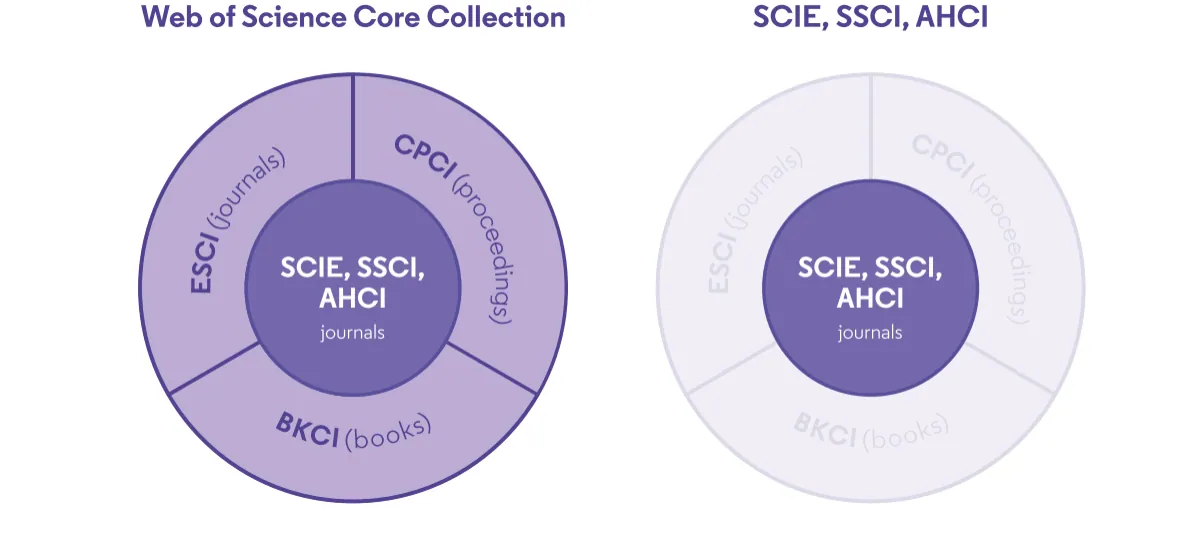SCIE, SSCI, ESCI & AHCI Key Indexes for Academic Research
In the world of academic research and scholarly publishing, access to reputable databases and indexes is essential.
These Indexing help researchers find relevant literature, gauge the impact of their work, and identify potential collaborators. Among the most widely recognized and respected indexes are SCIE, SSCI, ESCI, and AHCI.
Get A Free Quotes
What is SCIE ?
SCIE, or the Science Citation Index Expanded, is part of the Web of Science, a comprehensive citation database. SCIE focuses on scientific disciplines, including natural sciences, engineering, and technology. It serves as a vital resource for researchers looking to discover and assess scientific literature.
Key Features of SCIE
Why Choose US?

What is SSCI ?- Social Sciences Citation Index
The Social Sciences Citation Index (SSCI) is another component of the Web of Science, but it focuses on social sciences and related fields. Researchers in areas like sociology, psychology, economics, and political science rely on SSCI to access high-quality research articles.
Key Features of SSCI:
Interdisciplinary: SSCI bridges the gap between different social science disciplines, making it easier for researchers to explore multidisciplinary topics.
Citation Analysis: Like SCIE, SSCI offers citation analysis tools to assess the impact of social science research.
Coverage of Journals: SSCI indexes a wide range of social science journals, making it a comprehensive resource for social scientists.
What is AHCI? - Arts & Humanities Citation Index
The Arts & Humanities Citation Index (AHCI) is a part of the Web of Science that focuses on arts and humanities disciplines. It is a valuable resource for researchers in fields like literature, history, philosophy, and the arts.
Key Features of AHCI:
Humanities Coverage: AHCI extensively covers humanities disciplines, making it a go-to resource for scholars in these fields.
Citation Data: Researchers can access citation data to measure the impact of their work and discover related research in the humanities.
Cross-disciplinary Connections: AHCI facilitates cross-disciplinary research by linking humanities content with other disciplines in the Web of Science.
What is ESCI? - Emerging Sources Citation Index
While SCIE, SSCI and AHCI are well-established indexes, the Emerging Sources Citation Index (ESCI) focuses on emerging and influential journals in various disciplines. It serves as a platform for journals that are on their way to achieving inclusion in SCIE, SSCI OR AHCI
Key Features of ESCI:
Inclusion of Emerging Journals: ESCI includes journals that show promise and potential for future inclusion in SCIE, SSCI AHCI. This gives emerging researchers and journals more visibility.
Broad Coverage: ESCI covers a wide range of disciplines, ensuring that researchers in various fields can benefit from its content.
Global Reach: ESCI includes journals from around the world, promoting international collaboration and diversity in research.
Conclusion
These indexes provide a structured and credible way to discover, assess, and contribute to scholarly research. Whether you are a scientist, social scientist, emerging researcher, or humanities scholar, these indexes are likely to play a significant role in your academic journey.
Why Are These Indexes Important?
- Credibility: SCIE, SSCI, ESCI, and AHCI are renowned for their rigorous selection processes, ensuring that the content they index is of high quality and credibility.
- Impact Assessment: Researchers can gauge the impact of their work by tracking citations and journal impact factors in these indexes.
- Interdisciplinary Research: These indexes promote interdisciplinary collaboration by covering a wide range of disciplines and enabling researchers to find relevant literature outside their core field.
- Global Reach: They include journals and research from around the world, fostering international research connections.










